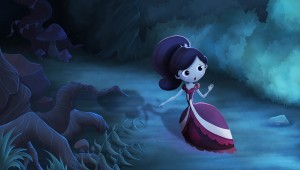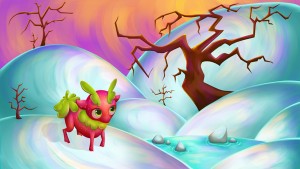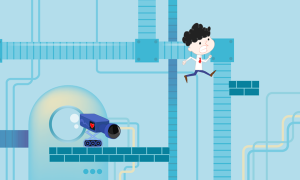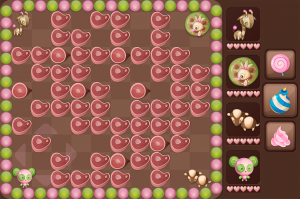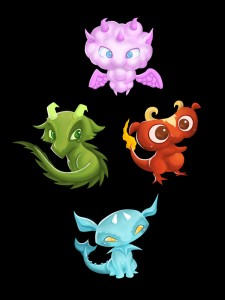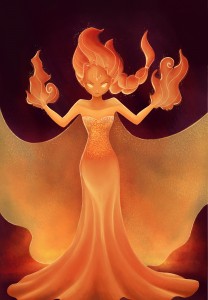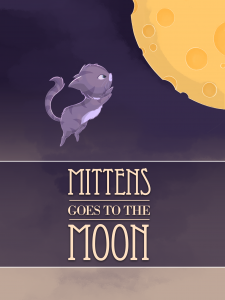
Lynne Liu is a 22-year-old game artist living in London and specializing in 2D and 3D art. Starting this week, she works at King (also known as the gaming company behind Candy Crush Saga). In this interview, she agreed to share interesting facts about her experience working in games, the work and responsibilities of a 3D artist, her work process when creating characters, but also about what it takes to become a candidate for working for one of the largest social games companies.
For game artists, it’s best to always be thinking about how their designs would look in the game as a whole
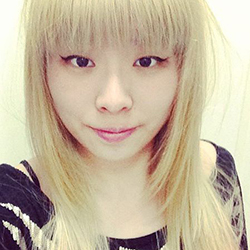 One of the many interesting things I noticed on your resume was that you were part of the 2013 London Gamecraft, where you led the team into creating a game that won awards for ‘best artwork’ and ‘best team effort’. And all in just 11 hours, which is insane! What was that experience like?
One of the many interesting things I noticed on your resume was that you were part of the 2013 London Gamecraft, where you led the team into creating a game that won awards for ‘best artwork’ and ‘best team effort’. And all in just 11 hours, which is insane! What was that experience like?
I led the art side of it, yes. It was the first time I experienced working so closely with developers and making a game from scratch. It was really enjoyable and challenging and was what actually led me to pursue a career as Game Artist with both 2D and 3D skills.
You are so young, what is the secret of gaining so much experience at 22 years old?
Thanks! I’m a very efficient and results-orientated person, and consider time a precious thing, so I would look at the steps I need to take in order to achieve certain goals and work out the fastest way to do this. I think this way about everything I do, so I guess that’s the ‘secret’ behind how I’ve achieved what I have so far. I may also be the youngest in our London office and I’m glad they gave me this opportunity despite my age!
You went to the Arts University College in Bournemouth. What did school teach you? Do you think you could have been where you are, if you had learned art all by yourself?
I’m very grateful for the animation course at the AUB (the university’s name has now been upgraded to the Arts University at Bournemouth). I’m a very social person, so it takes an environment of talented creatives like my friends at the AUB for me to be inspired and improve in the way that I have.
What do you think an aspiring game artist should do, in order to learn the necessary skills for game art?
For game artists, it’s best to always be thinking about how their designs would look in the game as a whole, as everything needs to fit together at the end of day. The portfolios don’t necessarily have to be game art specific as long as their skills are shown off.
What programs do you use, for creating the graphics for a social game?
I use both Photoshop and Illustrator, depending on the style of the graphics.
- The Queen of Spades
I’m most motivated and inspired by the talented people around me – by both their work and their progression in the industry
All along your career as a game artist, did you have a model? Someone you look up to, learn from and get inspired by?
I don’t have a particular person, I’m most motivated and inspired by the talented people around me – by both their work and their progression in the industry.
You are also experienced in 3D. How did you decide to learn 3D, as well?
At university I specialised in 3D. It was when I first discovered that I could model characters in 3D, similar to the characters in games that I loved as a child, that I developed a strong interest in learning more of it. It was only in the past few months that I started focusing more on 2D, so my next few pieces will most likely be 2D.
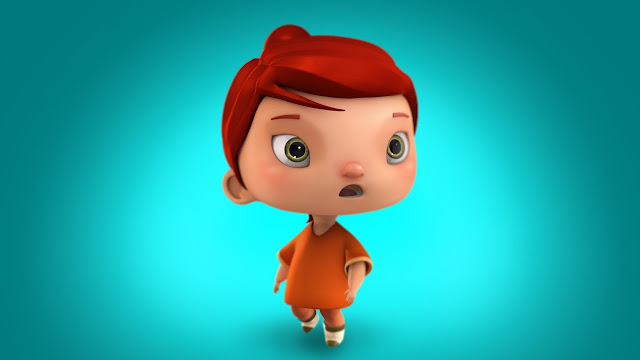
Character design in 3D. Original 2D design by Gillian Reid
Do you find that a game artist has more work opportunities, if he/she knows both 2D and 3D?
I would say more so if they focused on 2D actually. Most casual game artists need 2D skills as a requirement.
What are, generally, the responsibilities of working as a 3D artist?
It varies a lot depending on where you work, but for me it was creating characters from the model to the final render.
It would be taking a 2D character sheet, with a front and side pose of the character drawn on it, and then using this as a reference to make the character into 3D – at this stage it’s similar to a sketch in 2D. You then create textures and lighting for it, so this would be the same stage as painting it in 2D. Then you render this to make it look much more polished and refined.
The Monster from AUB Animation on Vimeo.
“The Monster” is a short animation you produced and worked on, as a 3D artist. How was that like, as a whole experience?
As a whole, I loved the experience. It lead me to discover that I had strong project managing/producing skills as well as artistic ones. There were obviously many challenges during the project, but in the end I managed to organise the team to meet the earliest deadline, leaving the team happy and relaxed when we finished.
What tools do you use (tablet, softwares) in your work?
I used to use an Intuos tablet, but now that I’ve been concentrating more on 2D, I use a Cintiq. For 2D I mainly use Photoshop and Illustrator and for 3D I can use both Maya and 3DS Max.

Lynne’s workstation, with her monitor, her Cintiq and a surprised sidekick who often plays her assistant 🙂
I always try to pose out the characters to give them more life
Part of your job is also creating characters. What is your process, when creating a character? What do you need to know, before you start putting the first lines on paper? Personally, I start by thinking about that character’s role – what sort of personality they might have, what sort of environment they would exist in. I always try to pose out the characters to give them more life, but sometimes I start with a basic front view to help me visualise the character better before posing them out.
What would be a good example of a character & process you used? The Queen of Spades was created as a complete piece, so for that I didn’t focus on it as just a character design, I focused on the piece as a whole, i.e. how the background and character could complement each other etc. The Boy with a Hat, however, was done in the method mentioned above though. So firstly, I thought about his personality – cute, curious, playful, energetic, and then his environment – I wanted him to be the type of child people could relate to, so I thought he would exist in quite a normal world as opposed to a fantastical one. I then put these elements together to decide the shapes and sizes of his limbs/features, what clothes he would wear and finally the sort of poses he would have.
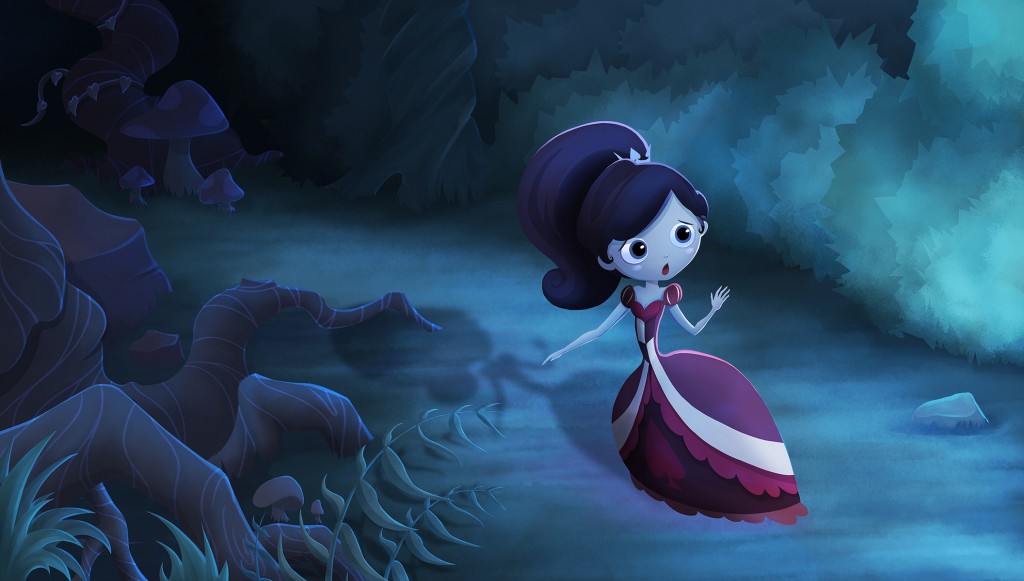
The Queen of Spades

The Boy with a Hat
I’m a Game Artist (2D/3D) at King, and to get here, it was challenging to say the least
This was also your first week in your new job at King – congratulations for that! Tell me a bit about this experience, what is your role there and how did you get the job?
I absolutely love it here! Even though it has only been a few days, I already feel familiar with a lot of people and everyone seems to be on a similar wavelength. I’m a Game Artist (2D/3D), and to get here, it was challenging to say the least. King are extremely thorough with the recruitment process, so that they select the right people for the company and now that I’m here I can see exactly why it’s done this way – it creates an awesome environment where everyone can get on and have fun!
Any first impressions, thoughts about working in one of the hottest teams in social gaming, so far?
My team is great, and I can tell I’m going to learn a lot and have loads of fun working here!
What is your advice for artists who want to get to work at King? What skills should they work on, to be a good candidate?
It’s hard to generalise the answer, because everyone’s artwork is unique, but if anyone would really like to apply, they can feel free to get in touch and ask me for critiques on their portfolio. More in important than the portfolio though, is to have a personality that genuinely fits King’s ideals and beliefs.
- Steelix (Pokemon)
- Reskin of Bomberman game
- Artist’s vision of Elsa (Disney’s Frozen)
It’s good to understand what motivates each person, because it can help create an environment where everyone is performing at their best
Any important lesson you’ve learned, since working as an artist, and feel like sharing?
I’m not sure if this is specific to artists, but I have learnt that everyone works in their own way and is motivated by different things. So the best environment is one where people are supported in the different ways that they work, rather than be forced to work to someone else’s method. For example, I am very results driven, so I like to work to deadlines and tick things off a list and as I see more results I become more motivated. It’s good to understand what motivates each person, because it can help create an environment where everyone is performing at their best.
Any plans for the future, any ideas you dream of creating/producing?
It’s quite likely that I will go into producing later down the line, because it is something that fits very well with my personality. I would never, however, give up on my art completely, I will always do it in my spare time because I’ve spent so many hours cultivating these skills.
Follow more of Lynne’s work on her: blog | tumblr | behance | facebook | twitter

